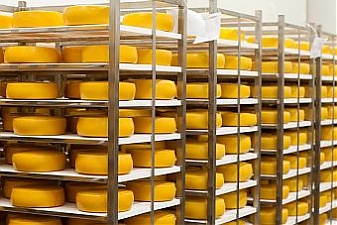Baltic Export, Baltic States – CIS, EU – Baltic States, Good for Business, Latvia, Markets and Companies
International Internet Magazine. Baltic States news & analytics
Thursday, 11.12.2025, 13:02
Cheese production in Latvia increases by 34% in January-May
 Print version
Print version |
|---|
Furthermore, cheese makers have compensated for losses caused by Russia's embargo by successfully exporting their products to several European countries, Vanda Davidanova, head of the "Siera klubs" cheese makers' association, said at the association's meeting on July 14th.
"Last year, 38,400 tons of cheese was produced, the year before that – 35,200 tons, whereas results for the first five months this year strongly suggest that cheese production amounts will continue to rise. As for exports, 6,131 tons of cheese was exported in the first five months this year as compared to 6,067 tons in the respective period of 2014, which constitutes a 1% growth, also a decent indicator," said Davidanova.
Janis Valgis, deputy head of the Rural Support Service's Statistics Department, said that cheese makers lost a major market due to Russia's embargo in force since last August. For instance, 2,707 tons of cheese was exported to Russia in 2014, however, cheese makers have been able to find new markets instead.
"Cheese export to Germany has increased 34% thus far this year, where 2,096 tons of cheese has been sold, exports to the Netherlands have grown 19% (1,165 tons), exports to Estonia – 11% (695 tons), and exports to Lithuania, Italy, Sweden, Morocco and Poland have also increased. In addition, cheese from Latvia is now also exported to Saudi Arabia, Serbia and Austria. These are remarkable results have made up for the loss of the Russian market," said Valgis.
At the same time, Valgis admitted that the situation with fresh milk is different – every third ton of fresh milk is exported.
"Fresh milk export has reduced 10% in the first five months year-on-year, however, about 30% of fresh milk is exported. This is because of the more advantageous prices offered by foreign companies, and the fact that Latvian companies still cannot process all the milk that is produced in Latvia," said Valgis.
According to the Central Statistical Bureau, one household member in Latvia spent an average EUR 3.2 on cheese every month in 2013. Cheese consumption in Latvia has increased 26% over a period of ten years.








 «The Baltic Course» Is Sold and Stays in Business!
«The Baltic Course» Is Sold and Stays in Business!

